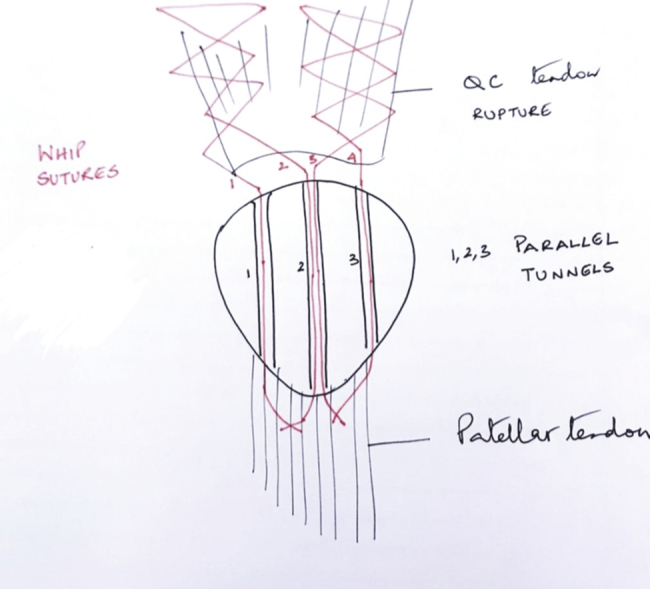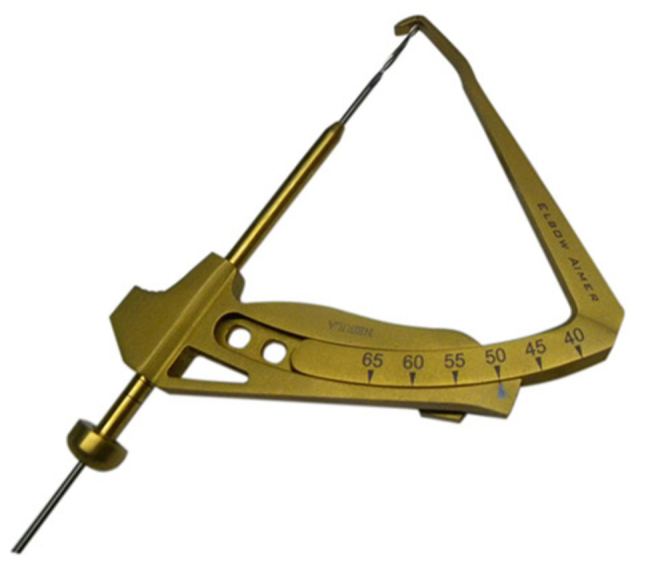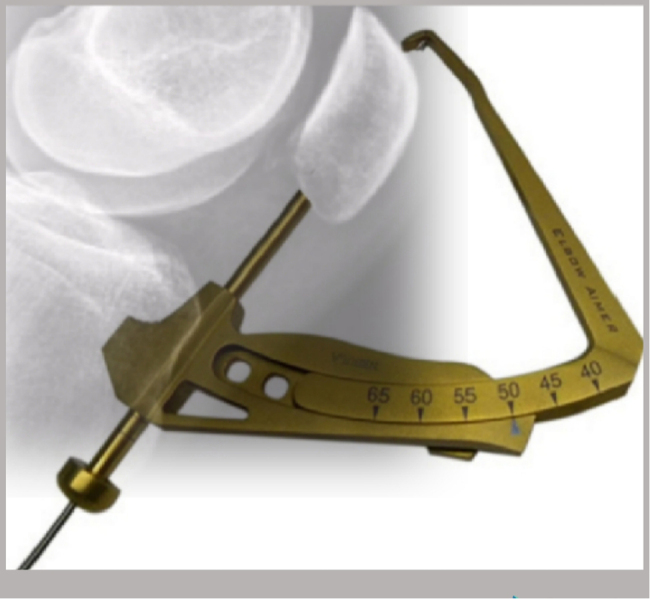BACKGROUND
Quadriceps and patellar tendon injuries are common and require surgical intervention for best outcomes.1,2 The current method of treatment involves whip suturing the tendons and passing them through the tunnel in the patella and tying the knots at the opposite end (Figure 1).3 However, making three equally spaced and parallel tunnels in the patella is often a daunting task.
Figure 1 .

Picture illustrating the arrangement of passing whip sutures through the patella
TECHNIQUE
We advocate the use of an anterior cruciate ligament (ACL) reconstruction jig (Figure 2) and a long wire to make such a tunnel in the bone. The angled bullets engage the cortex consistently and securely and the locking mechanism keeps the jig in place (Figure 3), hence guiding the entry and exit point. The tunnel is made with the help of a long wire and subsequently, sutures are passed through the tunnels with the help of a suture passer and are tied at the opposite end.
Figure 2 .

Anterior cruciate ligament (ACL) reconstruction jig. Image reproduced from www.nebulasurgical.com
Figure 3 .

Diagrammatic representation showing the use of the ACL jig to guide placement of tunnels in the patella. Image reproduced from www.sosbones.com.
DISCUSSION
This method can reproduce predictable tunnels in the patella for the surgical treatment of tendon injuries around the knee joint. This identifies the correct entry and exit point of these tunnels as intended by the surgeon without much guesswork. The holes are parallel and evenly spaced out. The depth of the tunnel could also be easily managed with this jig and this is easily available in most centres performing orthopaedic surgery.
References
- 1.Lee D, Stinner D, Mir H. Quadriceps and patellar tendon ruptures. J Knee Surg 2013; 26: 301–308. 10.1055/s-0033-1353989 [DOI] [PubMed] [Google Scholar]
- 2.Pengas IP, Assiotis A, Khan W, Spalding T. Adult native knee extensor mechanism ruptures. Injury 2016; 47: 2065–2070. 10.1016/j.injury.2016.06.032 [DOI] [PubMed] [Google Scholar]
- 3.Ibounig T, Simons TA. Etiology, Diagnosis and Treatment of Tendinous Knee Extensor Mechanism Injuries. Scand J Surg 2016; 105: 67–72. 10.1177/1457496915598761 [DOI] [PubMed] [Google Scholar]


